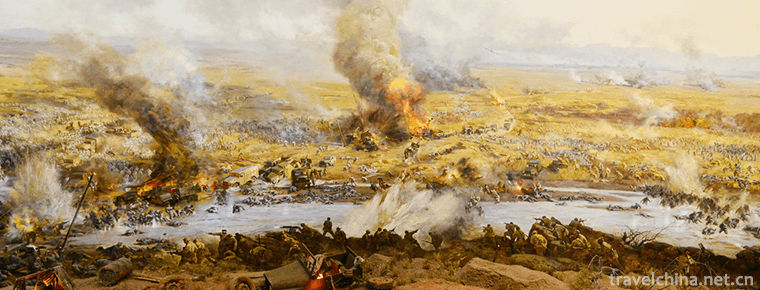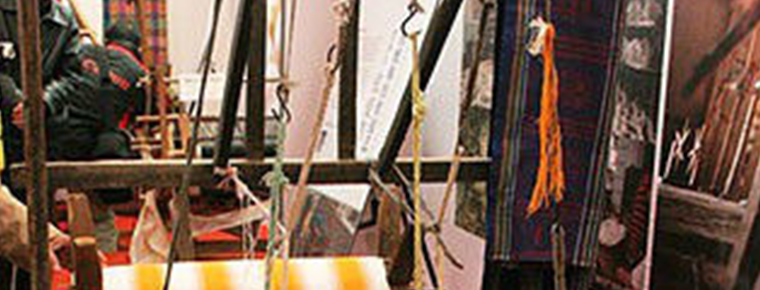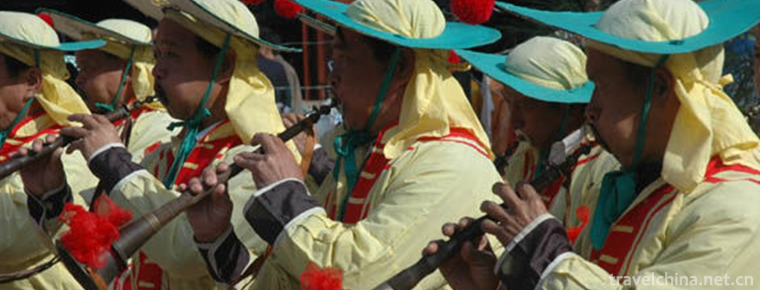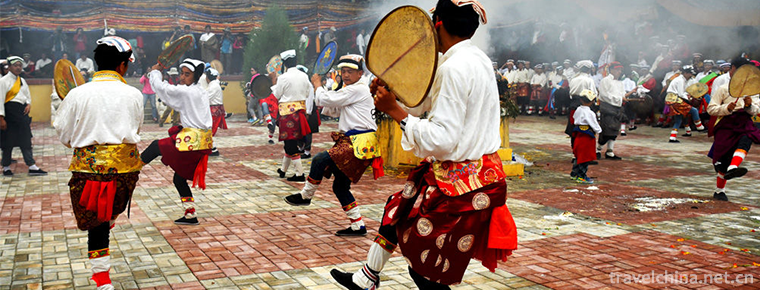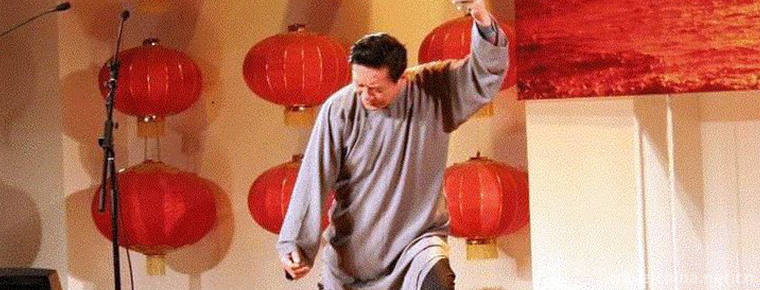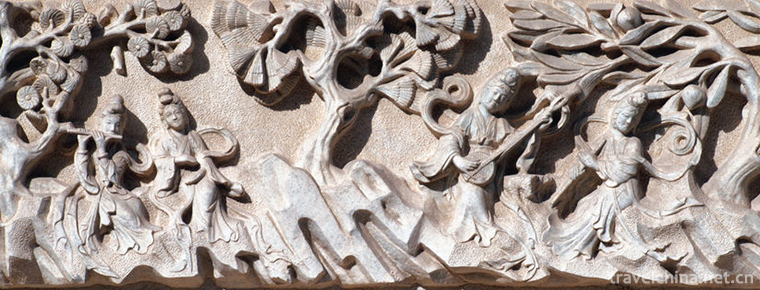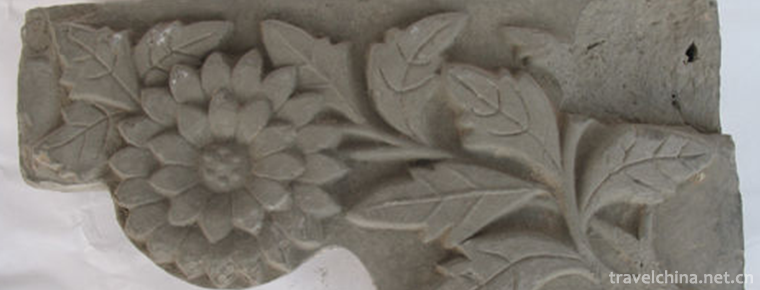Qingyang Xiangbao embroidery
Qingyang Xiangbao embroidery
Qingyang Xiangbao embroidery system, Qingyang folk traditional art in Gansu Province, is one of the national intangible cultural heritage.
According to the pattern of paper-cut, various patterns are embroidered on the silk fabric with colorful thread, then different shapes are sewn, and the inner core is filled with silk, cotton and spices, thus making a small, exquisite and beautiful embroidery. This kind of embroidery is called sachet, or purse, and Qingyang folk is called "ju Huo zi". As the ancient folk goods of the Dragon Boat Festival in Qingyang, it embodies the good wishes of the local working people to dispel evil spirits, avoid disasters and pray for blessings. Qingyang Xiangbao is a pure handicraft product compatible with three-dimensional modeling and plane embroidery. Its configuration is simple and plain. It can be divided into four types according to the production techniques: dim type, wire plate type, three-dimensional embroidery type and plane embroidery type.
On May 20, 2006, Qingyang Xiangbao embroidery system was approved by the State Council of the People's Republic of China to be included in the first batch of national intangible cultural heritage list with the heritage number_-26.
historical origin
Xiangbao, the ancient name of Xiangbao, also known as purse, Qingyang local commonly known as "dim", "dim", "play live". Qingyang local folk has always followed the traditional custom of making sachets by handmade skillful women, giving them away at Dragon Boat Festival and wearing sachets to dispel evil spirits.
Qingyang Xiangbao embroidery is widely distributed in 8 counties (districts) of Qingyang. Its origin can be traced back to the hygienic customs of the Huangdi Period, the "fumigation method" and the clothing civilization and immature technology of the Neolithic Period. Its craftsmanship matured in the period of Shun Ming-yu's twelve chapters of clothes, painting and embroidery. It was the most abundant in the Ming and Qing Dynasties, and popularized throughout the city from the Republic of China to the 1960s after liberation.
Qingyang Xiangbao embroidery technology is an ancient style of needlework plastic arts. It is a pure handicraft craft that combines three-dimensional plastic arts and plane embroidery. There are three main categories of three-dimensional plastic arts and skills: one is miserable. The second is wire tray. Third, three-dimensional category, divided into single-sided hangings, accessories, double-sided hangings, three-dimensional hangings and pendants.
Qingyang Xiangbao (misty) is simple and plain in in configuration, but beautiful and diverse; rough and thick embroidery, relief and barbarous flavor, giving people the aesthetic feeling of primitive life. Modeling is varied and varied. It is not only the inheritance of primitive and traditional handicraft skills by Qingyang women from generation to generation, but also the reproduction of personal skills and wisdom. Most of them focus on polytheism and primitive totem in human childhood. They mainly focus on ancient historical decoration. They aim at decorative function. They also focus on ornamentation and wear. They are mainly made of sachets, hanging slips, sleeves, table skirts, jackets and pillow tops.
According to historical records, sachet, also known as purse, also known as sachet, perfume, odor, Qingyang commonly known as "dim" or "play". In Qingyang area, there is a custom of wearing "dim" on Dragon Boat Festival (originally referred to as a sewing method of original bone needles, and later borrowed to use cloth to sew bags that can be tightened at the mouth of bags). It is said that Qibo, the author of the Yellow Emperor's Internal Classic, used to carry a medicine bag to prevent epidemic and eliminate plague and snake venom, and initiated the "fumigation method". Since Qibo was born in Qingyang, this law has gradually become a custom in the local area and has been spreading continuously. Herbal medicines are called "vanilla", so medicine bags are called "sachet" or "dim".
In Huangdi Neijing, the earliest classic of Chinese medicine, there are records of sachets.
During the Warring States Period, in Quyuan's Lisao, there were "Hu Jiang Hedge and Pi Zhi, which Qiu Lan thought was admired". Jiangli, Pizhi and Qiulan are all herbs. He means to be connected. Pei is Pei Mo, which means not only the incense bag, but also the wearing. The full meaning of the sentence is to carry a pestle full of vanilla on your body. This shows that the sachet was an ornament as early as the Warring States Period in which Quzi lived. In the Book of Rites of the Han Dynasty, there is a cloud: "Men and women who are not crowned... Every cocoon has a bad smell. Smell is fragrant bag, which means that all the minor men and women in Han Dynasty wore fragrant bag.
In the Tang and Song Dynasties, sachets gradually became the exclusive products for ladies and beauties. Male officials began to wear purses. Some officials simply put their purses on their court clothes when they went to court. Of course, at that time, the purse was not exactly the same as the perfume bag. The main contents of the perfume bag were vanilla, while the purse was mainly "handkerchief fine things". This coincides with the handbag "Thousand-year-old sachet" unearthed from Shuangta Temple in Huachi County, Qingyang City in 2003.
To the Ming and Qing dynasties, Qingyang sachets were very prosperous, and became a good gift for people to wear or give. By the Qing Dynasty, sachets had become tokens of love.
Historically, sachets were mostly used as gifts for local folk Dragon Boat Festival. Their main functions were to pray for good luck and to ward off evil.
From the Republic of China to the 1960s after liberation, the embroidery of Qingyang sachets was popular in every household. Most girls in Qingyang learned needle and thread at the age of seven or eight.
Inheritance and Protection
Inheritance Significance
Looking at Qingyang sachet, it has strong traditional color, exquisite craftsmanship, strong three-dimensional sense, complementary dynamic and static, deep folk consciousness, all of which have their beautiful symbolism, and are the treasures of local traditional art. As the traditional local folk ornaments of the Dragon Boat Festival, Qingyang Xiangbao embodies the beautiful appeal of people's soul, permeates the symbolic meaning of "praying for good fortune and avoiding evil". Every piece is endowed with the connotation of local folk culture that shows life, vitality, expresses thoughts and beliefs, reveals human nature and desires, and fully reflects the simple, healthy and upward spiritual outlook of local working people, and contains brilliance. The ancient civilization of Xia Dynasty is broad, heroic and masculine.
Qingyang Xiangbao has such a long history, mainly because Qingyang has a strong farming culture and customs. One of the most remarkable characteristics of farming culture is that men farm and women weave. On the premise of more developed productivity, besides weaving and sewing clothes, women also make some handicraft and gifts to embellish their lives and connect with their emotions, and the sachets are born and widely spread. These sachets give people a sense of magnificence of primitive life, including and immersed in the mystery of ancient philosophy, the content is all-encompassing, mostly with the theme of various worship and primitive totem in human childhood.
Qingyang Xiangbao is a traditional craft, the main inheritors are Li Xiue, He Meiying and so on. Qingyang Xiangbao embroidery is facing the situation that handicraft products are replaced by modern replicas. Embroidery technology is gradually lost. Most of the workers with folk culture knowledge retire. There is a shortage of research talents and successors. It is urgent to rescue and protect them.
Moral connotation
In Qingyang, the "thousand-year-old sachet" unearthed from Shuangta Temple in Huachi County, choosing the deformed plum, lotus and twisted flowers as embroidery patterns, is designed according to the doctrine of Buddhist Pure Land. Its implication is to regard this small sachet as "Western Pure Land", because the deformed plum blossom has been used as a auspicious symbol in front of Buddha's chest since the Tang Dynasty. From the existing sachets of Qingyang folk since the Qing Dynasty, most of them are based on flowers and animals, and express various emotional sustenance and beautiful yearning by means of metaphor and symbolism. For example, Pisces, butterflies and Jiaolong are used to symbolize love, intercourse and fertility between the sexes; Lotus, lotus, peony and plum are used to symbolize women; Magpie of Dengmei is used to symbolize men; Pine Crane is used to symbolize longevity and pomegranate is used to symbolize many children; and the homophonic sound of Chinese characters is used as a metaphor everywhere: the "premature birth of noble children" (jujube, peanut and cinnamon round) for newly married couples. The combination pattern of lotus seeds; the combination pattern of cat and butterfly play and peony for the longevity old people; the "Fushou doll" for the children (with the simple doll as the main body, surrounded by bats and peaches, implying how happy and longevity this son is in his life)...
The traditional concept of ghosts, gods and Demons makes people think that in order to make children grow up safely and without disaster, they have to rely on gods or mascots to avoid evil and exorcise ghosts and protect themselves from disasters. Qingyang tiger, lion pattern single sachet and five poisonous dustpan, five poisonous hats and other group sachets, all belong to this category. In addition, there are chickens, chickens crow at dawn, so the ancients linked chickens with the disappearance of ghosts, believing that ghosts are afraid of chickens, chickens can avoid evil and exorcise ghosts. In addition, garlic bale (garlic bone) is also a symbol of evasion. Stitching the gourd seeds into the gourd sachet is also considered a magic ear-protecting treasure.
Each kind of fragrant bag is exquisite. Five poisonous fragrant bags are one of the most characteristic fragrant bags in Qingyang. It permeates the symbolic meaning of expelling illness and seeking good fortune, praying for good fortune and avoiding evil, and reposes people's ideal and pursuit of life. "Five poisons" are several kinds of animals. The definitions of "five poisons" vary slightly in different areas, but they are basically ugly, disgusting and fearful animals, such as crabs, toads, venomous snakes, spiders, scorpions, lizards, centipedes, geckos, etc. Animals often appearing in the theme of "five poisons" were considered as dangerous animals in ancient society. In ancient times, people were awed by all kinds of poisonous insects, so they were endowed with some kind of divinity or magic. Qingyang's unique "five poisons" sachet also borrows the idea of fighting poisons with poisons to ensure safety, eliminate all diseases, be auspicious in the event of death, and protect health. It is the sublimation of the art and aesthetics of human life, and the artistic concept that the most primitive life spirit and belief connotation of the nation has accumulated in the local folk for a long time.
Baijiayi is sewn from each family with a bit of cloth head. Each piece of cloth is an octagonal flower with eight distorted gossip symbols, representing eight or sixty-four gossips. If a child is born with any missing eight characters, he can wear them to make up for it.
There is also a kind of perfume bag called "thin water and long flow", which contains bamboo and is wrapped with silk thread outside. Most of them are given to their daughter-in-law by their mother-in-law, which means to live frugally and have a long flow of water. The sachets used in marriage are also exquisite. The men are called "Four Spirits Joy Lock" and the women are called "Sweet Lock". There are seven beads worn with red thread. They represent the old red thread worn in July and July. They are exchanged when they get married, just like the exchange rings in Western weddings.
Medicinal value
Located in the Loess Plateau of Longdong, Qingyang is the cradle of the activities of Emperor Xuanyuan and the birthplace of Zhou people. It is also the hometown of Qibo, the founder of traditional Chinese medicine culture.
Qingyang Xiangbao has a long history, and the local folk culture and art deposit is very rich. The Xiangbao, which is inherited from Qihuang medicine, is a wonderful flower of this local folk art. It not only has a high aesthetic value, but also has a special effect of disease prevention and treatment. It has made a certain contribution to the reproduction of human beings for thousands of years. Its medical value is discussed as follows.
Qingyang Xiangbao has a wide variety of names. Among them, various kinds of sachets, ear pillows and abdominal pockets have played an important role in fitness and disease prevention.
In order to prevent and treat infectious diseases, such as upper sensation, influenza, rhinitis, sweat odor, skin eczema and so on, aromatic anti-fouling and anti-epidemic drugs such as Atractylodes rhizome, realgar, herb, pepper, mint, Angelica dahurica, cinnamon twig, ginger, borneol and windbreak are often used.
As for ear pillow, it refers to digging a piece in the middle of the pillow, the size of space happens to protect the ear from pressure. Emphasis should be laid on clearing away heat and toxicity, clearing liver and eyes, and using chrysanthemum, hook rattan, silkworm sand, mint, Acorus tatarinowii, mugwort leaf, wick, Xinfei, Fangfeng, honeysuckle, etc. to prevent insomnia, dizziness, hypertension, cervical spondylosis, head and face diseases and children's night crowing. If chrysanthemum, lamp wick and other medicines are added in it, it will not only clear the brain and strengthen the body, but also be pleasant to the eyes.
Pericarpium is mainly composed of Evodia rutaecarpa, clove, mugwort, fennel, Amomum seed, kaempferia, gansong, cinnamon, atractylodes, ginger and other warm-yang cold dispersants, which can not only prevent abdominal distention, abdominal pain, diarrhea, but also increase appetite and enhance immunity. Medical studies have shown that aromatic channeling drugs are mostly volatile oils, which contain ketones, phenols, aldehydes, alcohols and other substances, and can promote blood circulation and gland secretion.
Dressing perfume sachets and pillows can make the strong fragrance of drugs sniff through the mouth and nose. It can stimulate the olfactory nerve of the brain to produce good fragrance and slow stimulation to local Shu points, promote the content of immune globulin in the body to increase the body's defensive ability, so as to achieve the purpose of disease prevention and health care. Studies have shown that some of them can not only act on the sensory nerve endings of skin, but also cause deep vasodilation reflexively, which may be one of the mechanisms of "Xuanbi Tongluo, Huoxue Zhipai". The children's Hospital Affiliated to Suzhou Medical College made sachets of kaempferia, realgar, ginger, borneol, Cinnamon Twig and peilan, which could increase the content of immunoglobulin SIgA in children, and had bactericidal and antiviral effects. The outpatient department of traditional Chinese medicine in Bengbu City of Anhui Province used ginger, Sichuan pepper, Atractylodes rhizome and capsicum tomato as sachets to treat infantile anorexia. The main part of the action of paddling is in the umbilical cord. The umbilical cord, located in the center of the abdomen and living in one body, is named Shenjue, which belongs to Ren Meridian, Ren Du Meridian and Ren Du Meridian are exterior and interior to each other, and they are the same as all human meridians. The special relationship between umbilical cord and meridians provides a scientific basis for the prevention and treatment of abdominal diseases.
The traditional Chinese medicine of the motherland, which originated from the Yellow Emperor's Internal Classic, attaches great importance to the combination of prevention and treatment. There is a record in Su Wen Si Qi Tiao Shen Da Lun that "no cure has prevented disease, no cure has prevented disorder"; Su Wen Zhi Fa Lun also has the saying that "righteousness exists inside, evil cannot be done". Sun Simiao, a famous doctor in the Tang Dynasty, wrote in his book Volume 9, "The prescription of typhoid fever for Chisanpi epidemic: Veratrum, Rhizoma Paeoniae, Radix Aconiti, Cinnamomi, Pearl, Asarum, Ginger, Peony Peel and Sophora pod at the end of nine flavors, divided into one-inch daggers and placed them in the capsule". It fully shows that wearing perfume sac can avoid plague and prevent epidemic. In addition, according to Chao Yuanfang of Sui Dynasty, in Volume 45, on the origins and symptoms of various diseases, "children must wear hats, wear neckwear to get dry, and chrysanthemums are pillows". It is still in use today. There are also buckwheat husks, mung bean clothes and silkworm sand as pillows in Eastern Longdong, which make the pillows clear and profitable. Otherwise, as Chen Wen of the Song Dynasty said in "The Origin of Pediatric Diseases Fang Lun," the "head is the meeting of Zhuyang, Zhuyang is also mushrooming. The brain is the sea of marrow. If it is hot, it will cause myelorrhagia and sweating, or swelling of the neck, or opening of the head suture, or head sores and headaches. In addition, there are two prescriptions for pillow therapy in Volume Six. "No sleeping prescription for eye pain, steamed soybean bags for pillows"; "Grasshoppers for ear, fried flax for pouch, ear for pillow, that is out". Pouch can also cure diseases. Wu Shiji, an expert in foreign affairs in the Qing Dynasty, wrote "Treating rubella and accumulation..." Record with big aconite, fennel, male clove, female clove, wood incense, cimicifuga, Schisandra chinensis, kansui, aloes, musk, rubbing moxa and stitching stomach, binding Dantian Point.
Above will be medicine research end bag, using wearing, pillow, abdominal pocket treatment, collectively known as traditional Chinese medicine medicine medicine bag therapy, is an important part of traditional Chinese medicine clothing therapy, especially in pediatrics of traditional Chinese medicine.
Pillow method and paddle method are more suitable for the elderly. Qingyang, one of the birthplaces of Chinese culture, every year on the morning of Dragon Boat Festival, adults at home wear elaborate embroidered sachets for their children, including shoulder-tied sachets, chest-hung sachets, back-hung sachets, armpit-hung sachets, sleeves sewn, covered with sachets. There is also the custom of giving longevity pillows, ear pillows and abdominal pockets to the elderly. According to the theory of traditional Chinese medicine, children's skin is delicate, their dirty Qi is clear and their medicines are easy to penetrate. As long as they are used properly, they can achieve a ready-to-use, light and quick effect. Moreover, children are not fully conscious, difficult to take medicine, afraid of injections, using incense packs to prevent diseases and health care, the method is simple.
Older people are relatively weak due to the body Qi, blood, spleen and stomach, headache, insomnia, dizziness, abdominal distension, abdominal pain, diarrhea and other symptoms are often easy to occur, the use of pillows, ear pillows can clear the head, wearing a pocket can warm the cold, invigorate the spleen and stomach. This fully demonstrates the scientific rationality of the traditional method of keeping the head cool and the back, abdomen and feet warm in Qingyang, and also embodies the traditional virtue of respecting the old and loving the young of the Chinese nation.
Current situation of inheritance
In the 1960s, Qingyang Xiangbao began to go quiet. Until the mid-1980s, after Chinese experts Zhang Daoyi, Feng Zhenfeng, Cao Zhenfeng, Jin Zhilin, Yang Xianrang and French friend Jilem's inspection and recommendation, sachet embroidery flourished again, took the lead in the market, out of China.
Heritage figures
He Meiying, female, Han nationality, born in Qingyang, Gansu Province in 1934. The first batch of national intangible cultural heritage projects Qingyang Xiangbao embroidery representative inheritors.
protective measures
In 2001, cultural relics workers found a well-preserved Jin sachet inside the Shuangta Temple Pagoda in Huachi County. This fragrant bag is sewn by yellow-brown woven cotton. It is oval with straight side and agate jewel chain. It is surrounded by traditional edge-locking technology. It is decorated with cross needle yellow-white silk thread. The bottom has freehand phoenix claw decoration. The main body is crabapple flower, which is embroidered with colored silk thread. The shape of the mosaic is distinct from the color to the shape, rich in changes. Despite its long history, it is still gorgeous as new. Because Shuangta Temple was built in Jindading 10 years (1171), more than 830 years ago, the sachet is at least the same as the two towers, so it is called "Thousand-year-old sachet". Its unearthed discovery is the most direct testimony to the ancient cultural heritage of Qingyang Xiangbao, and proves that Qingyang Xiangbao has a very long history. "Thousand-year-old sachet" was offered to Buddha as a treasure in the hearts of believers at that time. Later generations have praised it with poems: "Thousand-year-old sachet hides Buddha pagoda, ten thousand needles are made of crabapple flowers, skillfully embroidered the flower-hiding world, and sincerely dedicated to the Pure Land brake." "Thousand-year-old sachet" is famous for its exquisite craftsmanship and is praised by folklore experts as "the best sachet in China".
In 2002, Qingyang City was named "the hometown of sachet embroidery" by the Chinese Folklore Society.
social influence
From 2002 to 2014, the successful holding of the twelfth consecutive Xiangbao Folk Culture Festival has had a significant and far-reaching impact at home and abroad, and has produced many positive results in promoting the economic and social development of Qingyang. It can be said that a stone stirs up a thousand waves, and many effects are gradually becoming clear and understood by more cadres and the masses.
On June 6, 2016, the 14th China Qingyang Dragon Boat Festival, sponsored by the Qingyang Municipal Committee and the Qingyang Municipal Government, jointly sponsored by the Qingyang Municipal Culture, Radio, Film, Press and Publication Bureau and the Xifeng District Government, opened in Tianfuyi Ecological Folklore Village.
On May 27, 2017, the 15th Qingyang Dragon Boat Festival of Xiangbao Folk Culture opened in Tianfuyi Folk Culture Village, Qingyang City, Gansu Province. In Qingyang, Xiangbao is called "dim" or "play", and its style is rough and exaggerated, showing a typical folk embroidery art style.
On June 15, 2018, the 16th Qingyang Dragon Boat Festival of Xiangbao Folk Culture opened in Tianfuyi Folk Culture Village, Xifeng District.
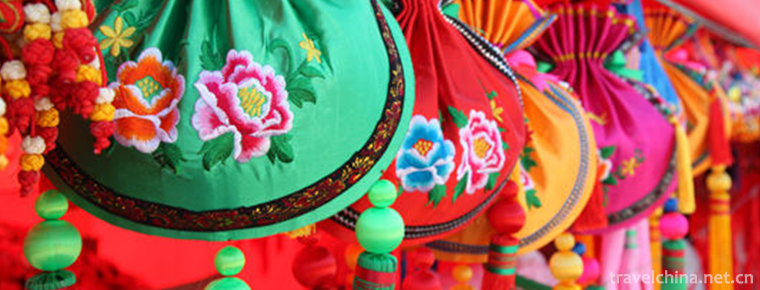
-
Dazhao Temple Scenic Area in Lhasa
Dazhao Temple, also known as "Zula Kang" and "Jue Kang" (Tibetan meaning for Buddhist temple), is located in the center of the old city of Lhasa. It is a Tibetan Buddhist temple bu.
Views: 123 Time 2018-12-12 -
Jinshan City Beach Shanghai
Jinshan City Beach is located in Jinshan District of Shanghai, located in the southwest of Shanghai and the North Bank of Hangzhou Bay. It is adjacent to Pinghu and Jiashan City in Zhejiang Province.
Views: 147 Time 2018-12-19 -
Laiwu Campaign Memorial
Laiwu Campaign Memorial Hall is situated on the Huangshan Mountain in Laiwu District, Jinan City. It covers an area of 45,000 square meters and has a building area of more than 8,000 square meters.
Views: 132 Time 2019-01-29 -
Traditional Cotton Textile Techniques
Chinese traditional textile technology has a long history. Since cotton was introduced from India in the 7th century, Chinese textile industry has changed from linen to cotton. .
Views: 219 Time 2019-04-19 -
Ear song
"Earsong" is also known as "Decorative Red". In Bai language, "ear" means simple son, and "song" means dance. It originated in the mountainous Bai nationality i.
Views: 199 Time 2019-04-28 -
Hebei Drum Music
Hebei drum and percussion music is a local traditional music mainly composed of percussion instruments and percussion instruments. It has been an important type of music.
Views: 118 Time 2019-05-02 -
June meeting in Regong
Regong June Festival is a unique traditional cultural festival of Tibetan and Tu villages in Tongren County, Qinghai Province. It has been circulated for more than 1400 years. Every June in the Lunar .
Views: 93 Time 2019-06-11 -
Shandong Express Book
Shandong Quick Book, originating from Shandong Province's local traditional folk art form, has a history of more than 100 years. It was first popular in Shandong, North China and Northeast China, and .
Views: 168 Time 2019-06-13 -
stone carving
Stone carving refers to the use of various carvable and carvable stones to create a visible and touchable artistic image with a certain space, in order to reflect social life, express the artist's aes.
Views: 236 Time 2019-06-15 -
Brick and plastic
Brick sculpture is the handicraft of folk craftsmen. It is made of mud into various animal models. Some of the images are realistic, but more are romantic and exaggerated ways of expression, the shape.
Views: 130 Time 2019-08-10 -
Ertan scenic spot
Ertan National Forest Park is located in Chengdu Emeishan Xichang Kunming tourist hotline. The majestic power station, the misty blue lake, the surrounding green mountains, the wild virgin forest.
Views: 130 Time 2020-10-16 -
Honor of Neijiang City
On June 9, 2020, it was awarded the advanced municipal Party committee and government of Sichuan Province in promoting the development of service industry..
Views: 304 Time 2020-12-16


